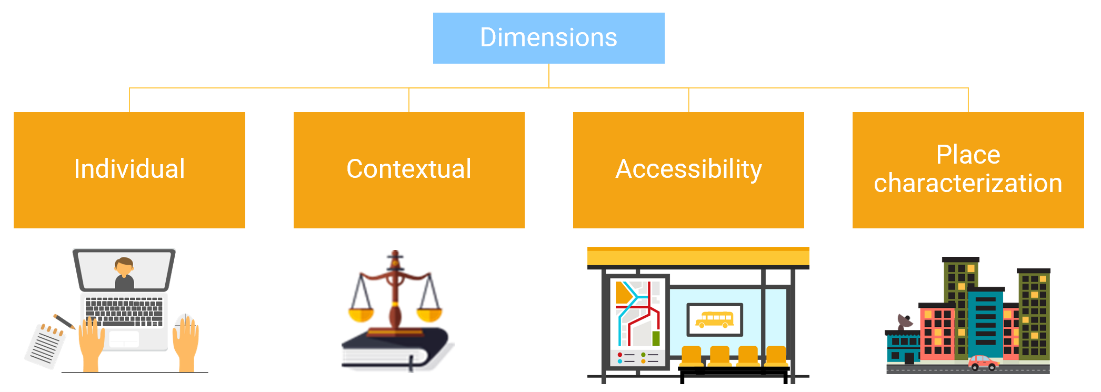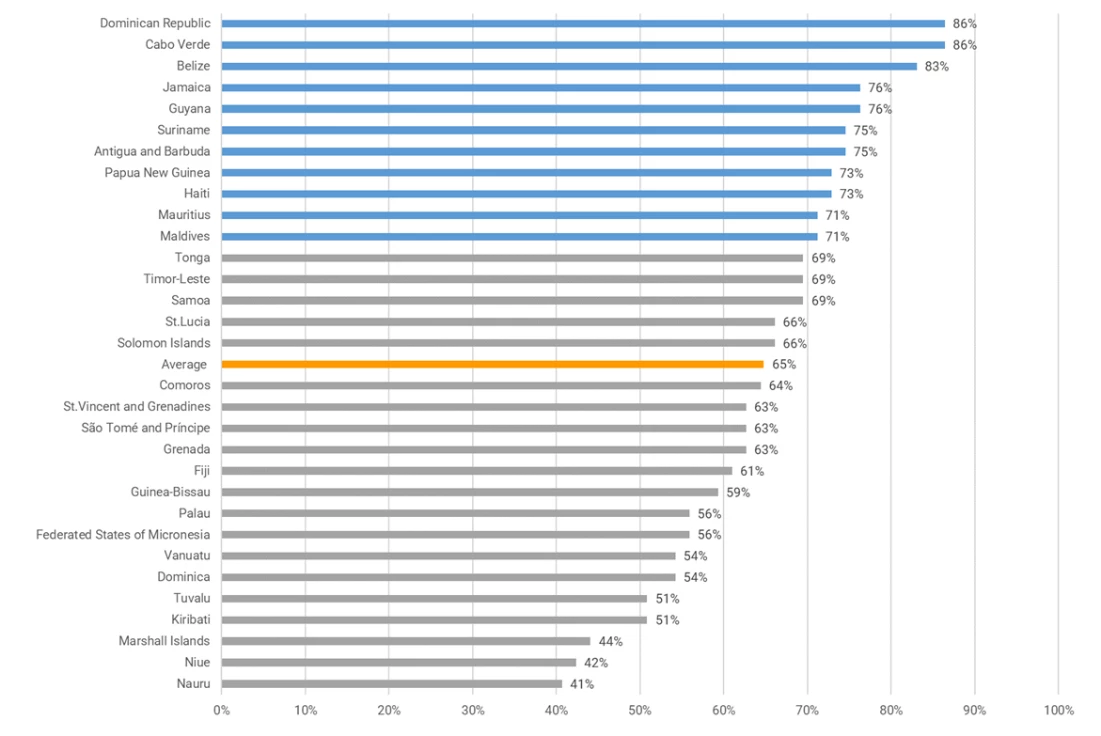This blog post is part of a special series titled "Spatial Insights into the Gender Employment Gap", powered by the World Bank's Geospatial Operations Support Team. Read the series' second installment here.
In recent decades, a powerful confluence of factors has propelled the global advancement of women's economic empowerment, creating more opportunities for women and girls around the world. Despite significant improvements in societal attitudes and policies in numerous countries, several opportunities remain difficult to attain in specific sectors or regions. Why?
Consider the case of Maria, a high schooler residing in a Small Island Developing State (SIDS). Eager to make a meaningful impact, Maria aspires to pursue a STEM degree and contribute to the Renewable Energy (RE) sector. Despite assurances of ample opportunities for women in this field and efforts to promote gender parity by RE companies in her country, Maria encounters formidable barriers. To start, no local universities offer STEM programs, and the challenges don't end there.
What hidden hurdles could stand in Maria's way of landing her dream job in the RE sector?
A four-dimensional perspective
To unravel the intricate factors impacting women's employment opportunities, a new World Bank report, "A Methodological Framework for the Geospatial Assessment of Women Employment and Business Opportunities in the Renewable Energy Sector - Methodology Report," thoroughly investigates the critical spatial and non-spatial aspects that affect women's access to job opportunities.
Notably, the report introduces an innovative Multicriteria Evaluation (MCE) framework, encompassing 23 key influencing factors that shape women's professional trajectories. These factors are classified into four dimensions, namely Individual, Contextual, Accessibility, and Place Characterization, the last two emphasizing geographical (spatial) considerations. The main findings? Simply put, it's not just about women's skills, but also about where they live.

- Individual factors encompass the unique personal characteristics of a woman, spanning the realms of physical, psychological, and socio-cultural factors. Aspects such as care responsibilities, sexual preferences, exposure to domestic violence, and educational attainment intricately shape women’s experiences and perspectives. Take Maria, for instance. As the eldest among her siblings, she shoulders the expectation of dedicating a portion of her time to caring for her younger brothers. Adding to the complexity, Maria comes from a religious family that traditionally assigns women to domestic roles, discouraging them from pursuing employment outside the home. Furthermore, Maria faces an additional challenge—she has a hearing impairment, necessitating the use of a hearing aid.
- Contextual factors provide a window into the legal and policy frameworks of countries. These elements exert significant influence over issues like workplace gender discrimination, women's financial autonomy, and the broader spectrum of women's empowerment. In Maria's country, the prevailing policies and regulations actively champion women's economic empowerment, ensuring fair treatment and prohibiting discrimination against women.
- The accessibility dimension centers around the ease with which women can reach services or destinations. These factors rely on proximity and impact women's mobility. For Maria, she must consider that local RE companies are situated in remote areas. The absence of public transportation alternatives connecting Maria's potential job prospects to her home implies that she would need to travel several kilometers on foot, constraining her time availability for other essential activities. In addition, if Maria decides to have a family, there are no childcare services near where she lives or where potential job opportunities are located, further complicating the balance between professional pursuits and family life.
- Finally, place characterization factors describe the attributes of a specific geographical location or environment. These factors do not involve mobility considerations but include aspects like a place's safety, fragility, conflict, violence, and vulnerability to natural disasters. The limited and unreliable public transportation system forces Maria to contemplate walking several kilometers through poorly lit areas to reach a public transportation stop, where women often report harassment complaints while waiting for a bus. Furthermore, the threat of flooding on these routes due to rainfall and tropical storms adds another hurdle, potentially hindering Maria's journey to her job.
Quality data is paramount
In Maria's story, as well as in the experiences of countless other women, we witness how, besides individual and contextual factors, geographical challenges severely restrict women’s ability to attain jobs, underscoring the need for a holistic approach to address the spatial dimensions of gender disparity.
Many countries are taking initiatives to empower women. These efforts range from advocating legislation to address gender disparities and implementing health programs for children with disabilities to developing educational programs emphasizing the importance of girls' education. These endeavors have played a pivotal role in inspiring Maria to pursue a career in STEM. However, despite these strides, the needle isn't moving significantly in many sectors or regions, mainly because geographical considerations have been largely overlooked.
The question arises: What is required to integrate spatial analyses into the equation? The simple answer: more and better-quality spatial data.
A recent effort led by the World Bank, "Geospatial Assessment of Women Employment and Business Opportunities in the Energy Sector," aimed to uncover crucial spatial datasets related to women's employment in SIDS, and the findings underscore a significant data availability gap. Out of 59 gender related datasets researched, only an average of 63% were available, ranging from 86% for the Dominican Republic and Cape Verde to 41% for Nauru.

The low availability of open spatial data implies missed opportunities for informed policymaking, scientific advancement, and improved economic and social conditions. Amidst climate challenges and economic uncertainties, having accurate, reliable, and up-to-date spatial data is pivotal for empowering governments to craft effective policies, allocate resources adequately, and address pressing issues like gender inequality. As such, achieving a nuanced understanding of the challenges women encounter in securing employment requires a solid foundation of comprehensive spatial data.
Integrating reliable, up-to-date spatial data into analyses becomes paramount, enabling us to paint a complete and accurate picture of the barriers women navigate in their pursuit of employment opportunities.
Related readings: "A Methodological Framework for the Geospatial Assessment of Women Employment and Business Opportunities in the Renewable Energy Sector - Methodology Report"




Join the Conversation